Constraining modifications of gravity with synergies between radio and optical surveys
Santiago Casas,
with Isabella Carucci, Valeria Pettorino,
Stefano Camera, Matteo Martinelli, Martin Kunz

arXiv:2210.05705 Phys.Dark Univ. 39 (2023) 101151
@santiagocasas santicasas.xyz




Large Scale Structure of the Universe
Illustris Simulation: www.nature.com/articles/nature13316
The Standard \(\Lambda\)CDM model
- \(\Lambda\)CDM is still best fit to observations.
- Some questions remain:
- \(\Lambda\) and CDM.
- Cosmological Constant Problem:

O(100) orders of magnitude wrong
(Zeldovich 1967, Weinberg 1989, Martin 2012).
Composed of naturalness and coincidence
sub-problems, among others.
Quantum Gravity?

String Theory Swampland?
Tensions in the \(\Lambda\)CDM model
- \(\Lambda\)CDM is still best fit to observations.
- Some questions remain:
- H0 tension, now ~5\(\sigma\)

L.Verde, et al 2019. arXiv:1907.10625

Lange et al. arXiv: 2301.08692

- \( S_8 = \sigma_8 \sqrt{\Omega_{m,0}/0.3} \)
- So called "lensing is low" problem or S8 problem.
- At the moment just a discrepancy (no tension) at 2-3 \(\sigma\)
DES DRY3 arxiv:2207.05766
Alternatives to \(\Lambda\)CDM
Ezquiaga, Zumalacárregui, Front. Astron. Space Sci., 2018
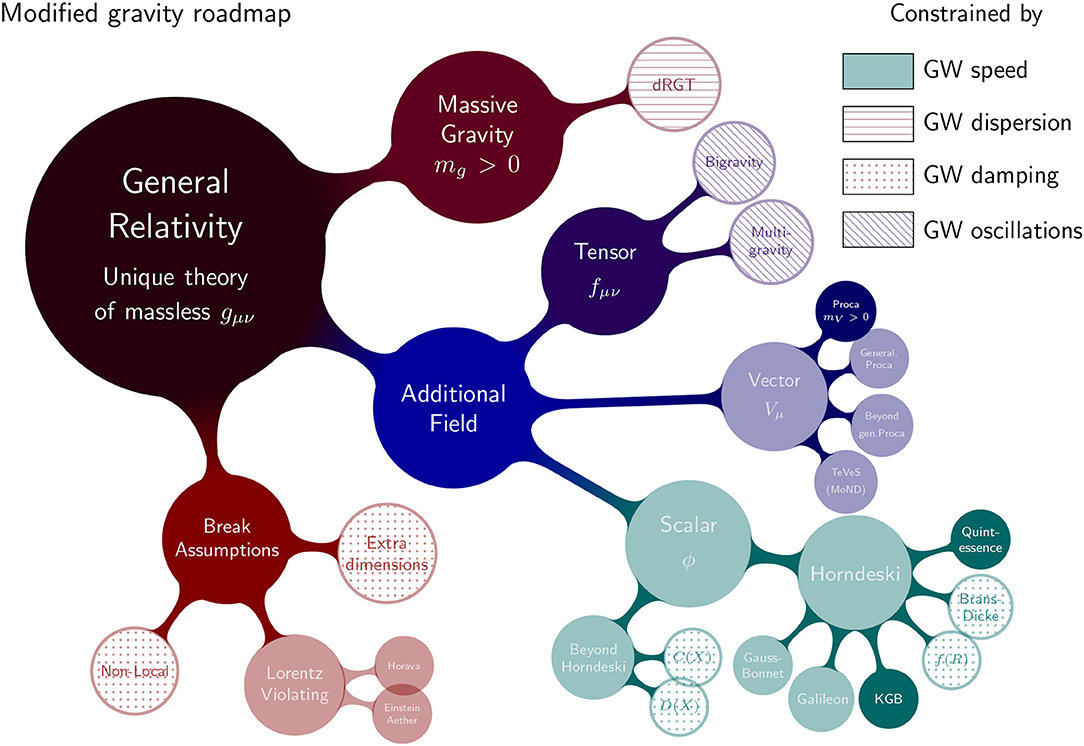
Alternatives to \(\Lambda\)CDM
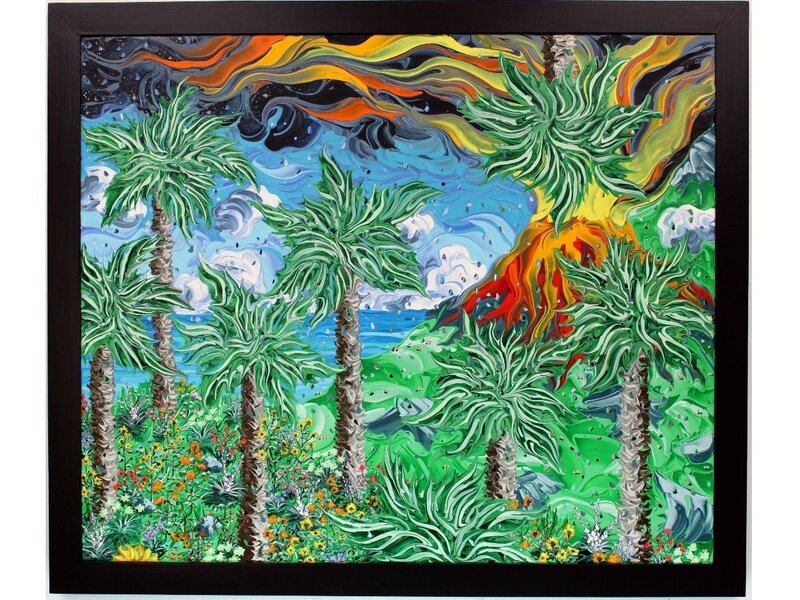

Gregory Horndeski
https://www.horndeskicontemporary.com/works
And in the Lorentz Institute seminar room!
Costa Rica - Arenal Volcano
- Horndeski theory: most general theory for an extra scalar degree of freedom, with second order equations of motion in 4D and no ghosts
- 4 Lagrangian terms, which have been largely ruled out by:
- Late-ISW
- GW170817
- No self-acceleration -> uninteresting?

Gregory Horndeski
https://www.horndeskicontemporary.com/works
Can we test more general models?

Cosmology of surviving Horndeski theory: The road ahead, N.Frusciante, S. Peirone, S. Casas, N. Lima, arXiv:1810.10521
Gregory Horndeski
https://www.horndeskicontemporary.com/works
And in the Lorentz Institute seminar room!
Parametrized modified gravity

In \(\Lambda\)CDM the two linear gravitational potentials \(\Psi\) and \(\Phi\) are equal to each other
We can describe general modifications of gravity (of the metric) at the linear level with 2 functions of scale (\(k\)) and time (\(a\))
Only two independent functions
Late-time parametrization: Planck constraints


- Using Planck satellite data in 2015 and 2018, constraints were obtained on these two functions \(\mu\) and \(\eta\).
- Late-time parametrization: dependent on Dark Energy fraction
- \(\mathcal{O}(100\%)\) relative errors
Planck 2015 results XIV, arXiv:1502.01590
Planck 2018 results VI, arXiv:1807.06209

Late-time parametrization: Forecasts
2017 Forecasts for Stage-IV : Euclid, DESI, SKA1, SKA2, only GC and WL no cross-correlation
- Study more general case of free \(\mu\), \(\eta\) functions at each bin
- Non-linearities crucial for constraints
- Z-PCA decorrelation
- Constraints on \(\mu\), \(\eta\) of O(10%)

- For late-time and early-time scenario:
Constraints on \(\mu\), \(\eta\) of O(3%) - When combining GC+WL+Planck priors



Casas et al (2017), arXiv:1703.01271
The Evolution of the Universe and the Dark Ages
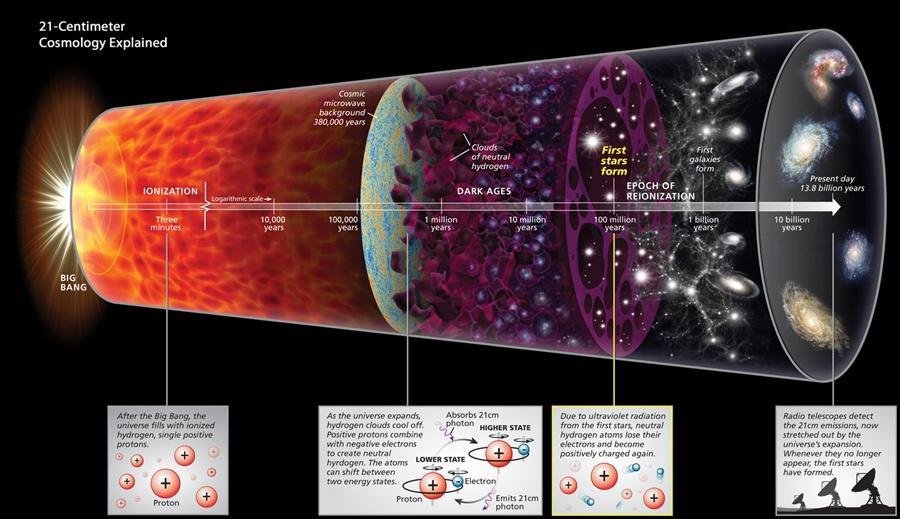
Complementarity of probes
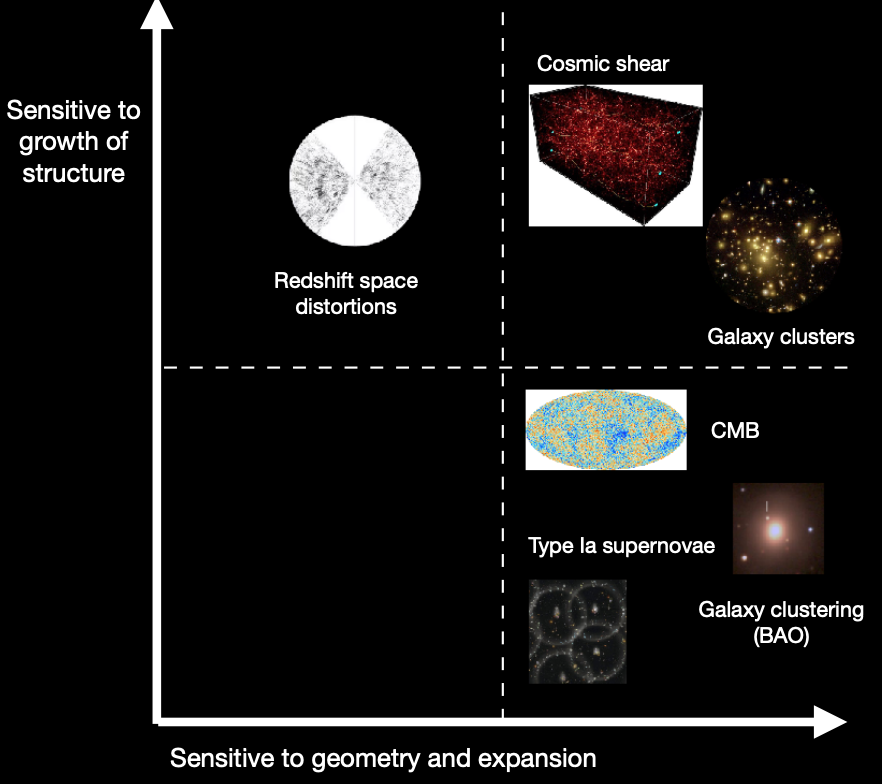

21cm Intensity Mapping
Image credit: Sunayana Bhargava
SKAO Probes
Image credit: Isabella Carucci
-
Continuum emission: Allows detection of position and shapes of galaxies.
-
Line emission of neutral Hydrogen (HI, 21cm):
-
Using redshifted HI line -> spectroscopic galaxy survey

2. Intensity Mapping: Large scale correlations in HI brightness temperature -> very good redshift resolution,
good probe of structures
SKAO Probes
Image credit: Isabella Carucci
-
Continuum emission: Allows detection of position and shapes of galaxies.
-
Line emission of neutral Hydrogen (HI, 21cm):
-
Using redshifted HI line -> spectroscopic galaxy survey
2. Intensity Mapping: Large scale correlations in HI brightness temperature -> very good redshift resolution,
good probe of structures

SKAO GC Surveys

HI galaxies spectroscopic survey
- GCsp: HI galaxy spec. redshift survey: \(0.0 < z < 0.5\)
probes 3D matter power spectrum in Fourier space.
SKA1 Redbook 2018, arXiv:1811.02743
SKA1 Medium Deep Band 2: \(5000 \, \rm{deg}^2\)


SKAO Angular Surveys
- GCsp: HI galaxy spec. redshift survey: \(0.0 < z < 0.5\)
probes 3D matter power spectrum in Fourier space -
GCco + WL + XCco (Continuum): \(0.0 < z < 3.0 \)
probes angular clustering of galaxies, Weak Lensing (Weyl potential) and galaxy-galaxy-lensing.
Angular number density:
\( n \approx 3.2 \rm{arcmin}^{-2}\)
SKA1 Redbook 2018, arXiv:1811.02743

Continuum galaxy survey
SKA1 Medium Deep Band 2: \(5000 \, \rm{deg}^2\)
SKAO Angular Surveys
- GCsp: HI galaxy spec. redshift survey: \(0.0 < z < 0.5\)
probes 3D matter power spectrum in Fourier space - GCco + WL + XCco (Continuum): \(0.0 < z < 3.0 \)
probes angular clustering of galaxies, Weak Lensing (Weyl potential) and galaxy-galaxy-lensing.
Angular number density:
\( n \approx 3.2 \rm{arcmin}^{-2}\) - For comparison: Stage-IV:
\( n \approx 30 \rm{arcmin}^{-2}\)
*kindly provided by Stefano Camera
Continuum galaxy survey

SKA1 Medium Deep Band 2: \(5000 \, \rm{deg}^2\)
Galaxy Clustering Recipe


BAO
Clustering
RSD

Spec-z
Euclid Collaboration, IST:Forecasts, arXiv: 1910.09273
3x2pt recipe

Euclid preparation: VII. Forecast validation for Euclid cosmological probes. arXiv:1910.09273
Directly constrains MG function \(\Sigma\) through Weyl potential
SKAO IM Surveys
- IM: Intensity mapping survey
\(0.4 < z < 2.5\) - Very good redshift resolution: \(\Delta z \approx \mathcal{O}(10^{-3}) \)
- We use: 11 redshift bins
-
Single dish mode:
\(N_d = 197\)
\(t_{obs} = 10000 \, \rm{hr} \)
We limit to the scales
\(0.001 < k < 0.25 \, [h/\rm{Mpc}] \)
SKA1 Medium Deep Band 1: \(20000 \,\rm{deg}^2\)

Intensity Mapping
- IM probes the underlying matter power spectrum.
- Density bias given by the HI mass contained in dark matter halos.
- 21cm brightness temperature depends on cosmological background & the energy fraction of neutral Hydrogen in the Universe \(\Omega_{HI}\).
- \(P_{\delta\delta,zs}(z,k) \) is the redshift space matter power spectrum
\(P^{\rm IM}(z,k) = \bar{T}_{IM}(z)^2 \rm{AP}(z) K_{\rm rsd}^2(z, \mu; b_{\rm HI}) \)
\(FoG(z,k,\mu_\theta) \\ \times P_{\delta\delta,dw}(z,k) \)
\(\Omega_{HI} = 4(1+z)^{0.6} \times 10^{-4} \)
\( \bar{T}_{\mathrm{IM}}(z)= 189h \frac{(1+z)^2 H_0}{H(z)}\Omega_{HI}(z) \,\,{\rm mK} \)
Jolicoeur et al (2020) arXiv:2009.06197
Carucci et al (2020) arXiv:2006.05996
\( K_{\rm rsd}(z, \mu; b_{\rm HI}) = [b_{\rm HI}(z)^2+f(z)\mu^2] \)
\( b_{\rm HI}(z) = 0.3(1+z) + 0.6 \)
Intensity Mapping x GCsp
- Cross correlation combines one term of brightness T with one K term for each "redshift sample".
- Same underlying matter power spectrum for both probes.
- A combined z-error (damping along the line of sight), where "sp" dominates, since the IM resolution is 1-2 orders of magnitude better.
\( b_{\rm g}(z) = \) fit to simulations for given galaxy sample
Jolicoeur et al (2020) arXiv:2009.06197
Wolz et al (2021) arXiv:2102.04946
\(\sigma_i(z) = \frac{c}{H(z)}(1+z) \delta_z\)
\(P^{{\rm IM} \times \rm{g}}(z,k) = \bar{T}_{\rm IM}(z) {\rm AP} (z) r_{\rm IM,opt} K_{\rm rsd}(z, \mu; b_{\rm HI}) \)
\( \times K_{\rm rsd}(z, \mu; b_{\rm g}) FoG(z,k,\mu_\theta) P_{\delta\delta,dw}(z,k) \)
\( \times \exp[-\frac{1}{2} k^2 \mu^2 (\sigma_{\rm IM}(z)^2+\sigma_{\rm sp}(z)^2)] \)
Intensity Mapping
- \(P_{gg}\) underlying galaxy power spectrum.
- \(P_{IM}/T_{b}^2\): IM power spectrum.
- \(P_{IM,g}/T_{b}^2\) cross-spectrum.
- Angle-dependent beam effect is in the signal*, damps accross the l.o.s.
- Along the l.o.s. damping due to FoG, but higher amplitude due to Kaiser.

Stage-IV surveys


- 14 000 square degrees in the sky
- 30 million accurate galaxy spectra
- Redshifts: 0 < z < 2


- 13245 square degrees in the sky
- 20~30 million accurate galaxy spectra
- 2 billion galaxy shapes
- with ground-based photometry
- Redshifts: 0 < z < 3
Euclid
DESI
Vera Rubin Obs. LSST
- 18 000 square degrees in the sky
- ~10 billion photo-z galaxies and shapes
- 11 years observations
- Redshifts: 0 < z < 3
Euclid Propaganda
#52weeks of Euclid in space

https://www.euclid-ec.org/euclid-anniversary/
instagram: @euclidconsortium
Exciting new science, but also too many new challenges!
Galaxy Clustering - IM Synergies

- GCsp-IM Cross-correlation in overlapping bins
- Addition in disjoint bins
- No GCsp-GCsp cross-correlation
*No Euclid results today, political reason, paper in prep.
Fisher Matrix forecasts
Given a likelihood function L, representing the probability of the data d, given the model parameters \( \Theta\) , the Fisher matrix is defined as the Hessian of the L:
Assuming that L is a multivariate Gaussian distribution with a covariance matrix C independent of \(\Theta\) :
The explicit form of F, depends on the given observational probe and the physical model assumption, for example for GCsp:
Fisher Matrix forecasts
What do we expect from the forecasts before doing them, just by looking at the formulas and the specs?
- SKAO (Phase1) has more independent probes but less statistical power (n(z) and area) -> less constraining power than Stage-IV
- WL and 3x2pt better at constraining \(\Sigma\)
- GCsp and IM better at constraining \(\mu\)
- GCsp x IM cross-corr. improves constraints on parameters?
Let's see the results !
SKAO Results
- GC-IM probes measure \(\mu\) at small \(z\), where \(\mu\) becomes important.


- Continuum probes measure better \(\Sigma\) ; Weyl potential is important.
SKAO Results

-
Blue: Combined GCsp+IM (3D)
- Yellow: Combined continuum probes (2D: angular)
- Purple: Combination of 3D and angular probes
- Constraints on \(\mu\) are good in angular, due to the XC contribution from GCco clustering.
SKAO Results

- Combining all SKAO probes (optimistic), 2-3% errors on \(\mu\) and \(\Sigma\).
- Minor improvement from Planck, mainly through ISW and CMB lensing.

SKAO x DESI cross-correlation

- GCxIM probes do not improve constraints on MG parameters,
but improvement on \(h\) and \(\sigma_8\)
DESI_E : high-z Emission Line Galaxies
DESI_B: low-z Bright Galaxy Sample
SKAO GCsp: low-z HI Galaxies
SKAO x DESI cross-correlation
- However, when combined with angular probes, there is a larger gain.

SKAO + optical
Proposals for the Science Book Chapter (and beyond)
- Have a unified open-source collaborative pipeline for forecasts and analysis
- Optical GCsp x SKAO IM +HI GC + SKAO continuum 3x2pt
- SKAO IM + HI GC + Optical 3x2photo + CMB XC?
- A set of minimal MG models (parametrized + binning/PCA) to explore
- Treatment of non-linear scales important! (Are we sensitive here to baryonification?) 1-loop Pk, Bispectrum (Dyonisis talk)?
- Neutrino mass, DM (Marco Regis talk), N_effective?
Pipelines
Code: CosmicFishPie
S.Casas, M.Martinelli and M.Raveri, S. Pamuk and more!
Soon to be released with MCMC support!
Contains:
Euclid (spectro+photo), Planck, LSST, DESI, SKAO IM, HI and continuum
https://github.com/santiagocasas/cosmicfishpie




jaxcosmo library https://github.com/DifferentiableUniverseInitiative
Campagne, Lanusse, Zuntz, SC, et al, 2302.05163

We still need to develop many parts of a differentiable pipeline!
TOPO-COBAYA: https://github.com/santiagocasas/topo-cobaya
SKAO + optical

Credit: Guadalupe Cañas, Pedro Carrilho, Santiago Casas, for IST:NL/L, KPs, CLOE papers
Neglecting baryons -> bias!!


Linde, Moradinezhad, Rademacher, SC, Lesgourgues (2402.09778)
CLASS 1-loop Code in development in Aachen, RWTH
Validated against CLASS-PT, Velocileptors

Implemented in MontePython, soon in CosmicFishPie for GCsp and IM
in Fourier and "Legendre"
SKAO + optical + CMB

Euclid Preparation: Sensitivity to Neutrino parameters, 2405.06047, Archidiacono, Lesgourgues, SC, Pamuk, et al.
Can SKAO contribute to these constraints?
Text
Conclusions
- \(\Lambda\)CDM is still the best fit to observations, however certain theoretical uncertainties and tensions in data are still of concern.
- Constraining modifications of gravity at the level of perturbations -> hints for alternative models.
- SKAO will be able to probe weak lensing and matter density perturbations in novel and independent ways compared to optical surveys.
- Synergies with optical surveys, like Euclid, DESI and Rubin, including cross-correlations are promising to remove systematics and break degeneracies.
- Using the good z-resolution of SKAO HI IM could place tight constraints on redshift-binned parametrizations.
Backup slide

Santiago Casas

SKA1 vs Euclid
SKA1:
GC+WL+XC (Continuum) +
IM (HI 21cm) + GCsp(HI)
vs
Euclid
(Gcsp+GCph+WL+XCph)
vs
Euclid
(Gcsp+GCph+WL+XCph)+SKA1 Pk-probes.
Unfortunately, the \(\mu\) constraints from Euclid alone dominate over the improvement that SKA1 "Pk-probes" add
PRELIMINARY

Backup slide

Testing at higher H0 value
Santiago Casas, 06.12.22
Late-time: Old SKA1, Euclid forecasts
Casas et al (2017), arXiv:1703.01271

- Old SKA1 forecasts contain only WL continuum and GCsp from HI galaxies
- Linear GCsp formalism and no IA params in WL

Santiago Casas, 06.12.22
Late-time: Old SKA1, Euclid forecasts
Casas et al (2017), arXiv:1703.01271

- However, we do roughly recover the same contour orientations and constraints with the new WL SKA1 forecasts.
- Deeply non-linear Pk recipe is the same, using an interpolation to recover GR at small scales.

Santiago Casas, 02.11.21
The Square Kilometer Array Obs. (SKAO)
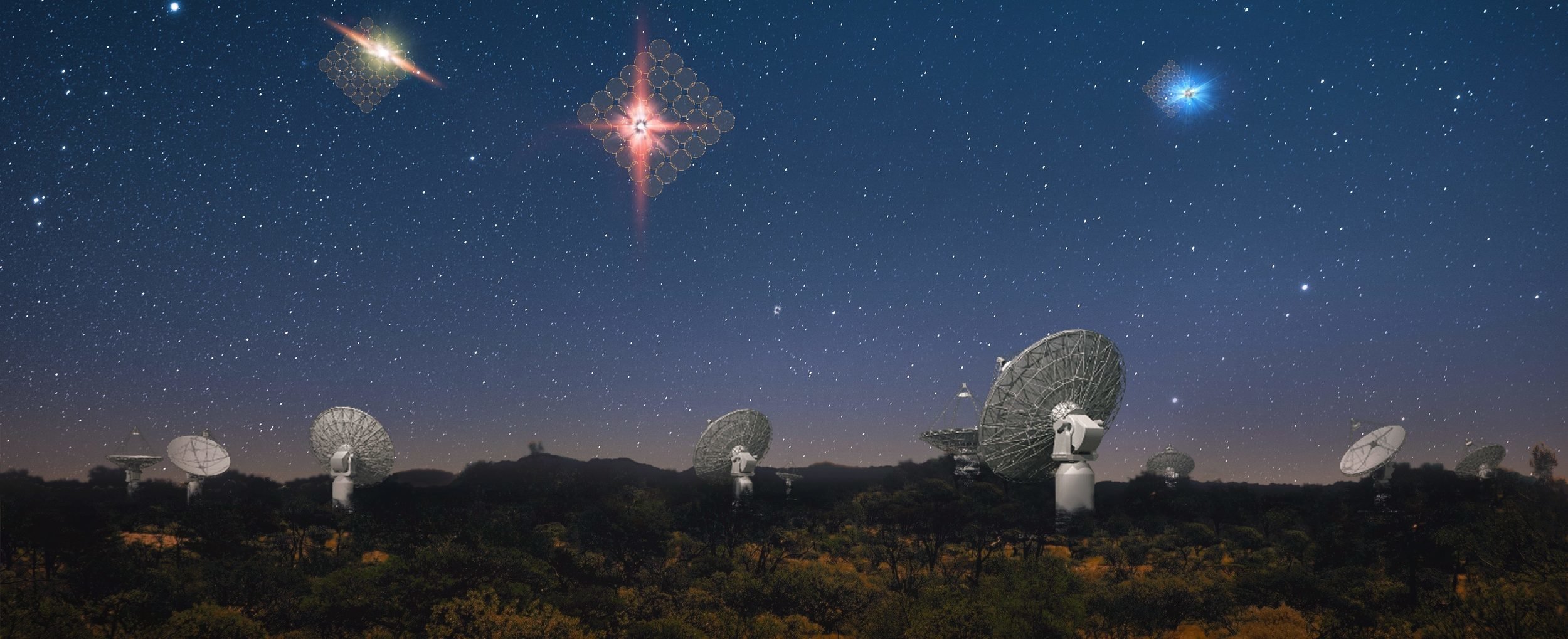
- Next-generation Radioastronomy observatory
- Largest radiotelescope in the world: eventually 1km^2 area.
- 15 countries + partners
- Australia + South Africa installations
- ~2 billion Euros up to 2030.
- 5Tbps data rate and 250 Pflops needed for computation
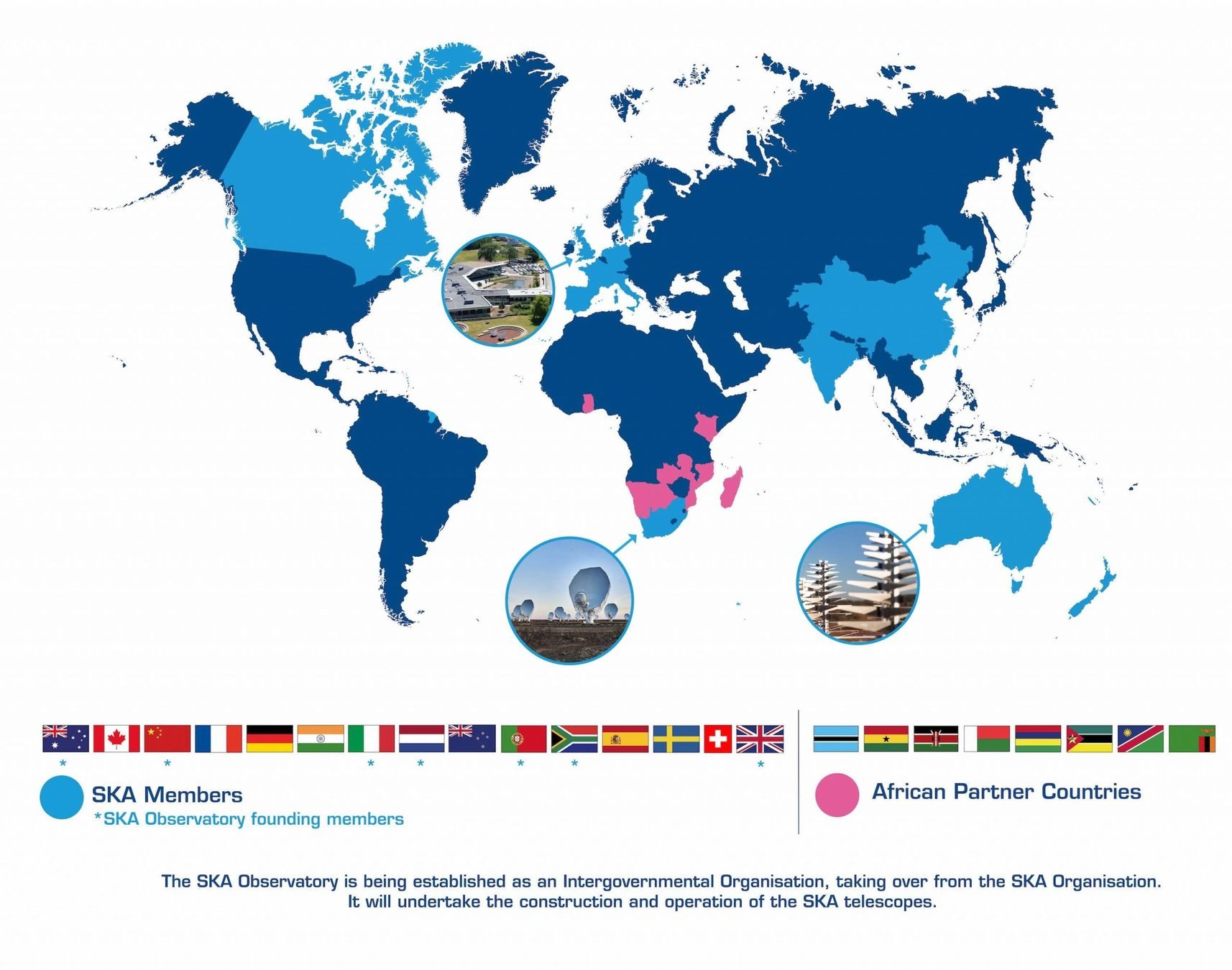

Santiago Casas, 06.12.22
The Square Kilometer Array Obs. (SKAO)
- 15,000-20,000 square degrees in the sky
- Precursors: 10^7, SKA-phase1: 10^8, SKA-phase2: 10^9 galaxies
- SKA1-MID: 0 < z < 3
- SKA1-Low: 3 < z < ~ 20
- Cosmology is just one small area, Exoplanets, Craddle of Life, Reionization, Cosmic Magnetism....

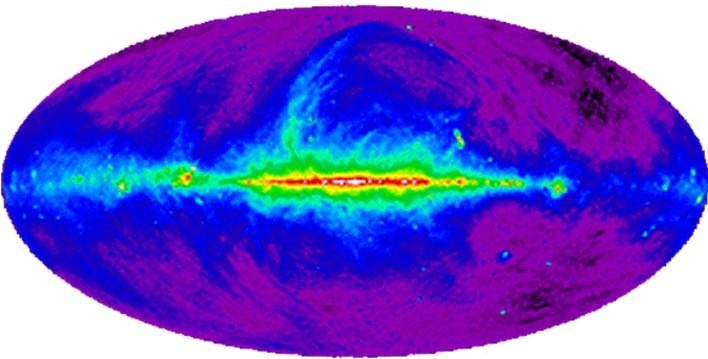
Santiago Casas, 06.12.22
Intensity Mapping Noise Terms

Number of dishes
Effective beam
\(\beta_{SD} = \exp[-\frac{k_\perp r(z)^2 \theta_b (z)^2}{8 \ln 2}] \)
\( \alpha_{SD} = \frac{1}{N_d} \)
Jolicoeur et al (2020) arXiv:2009.06197
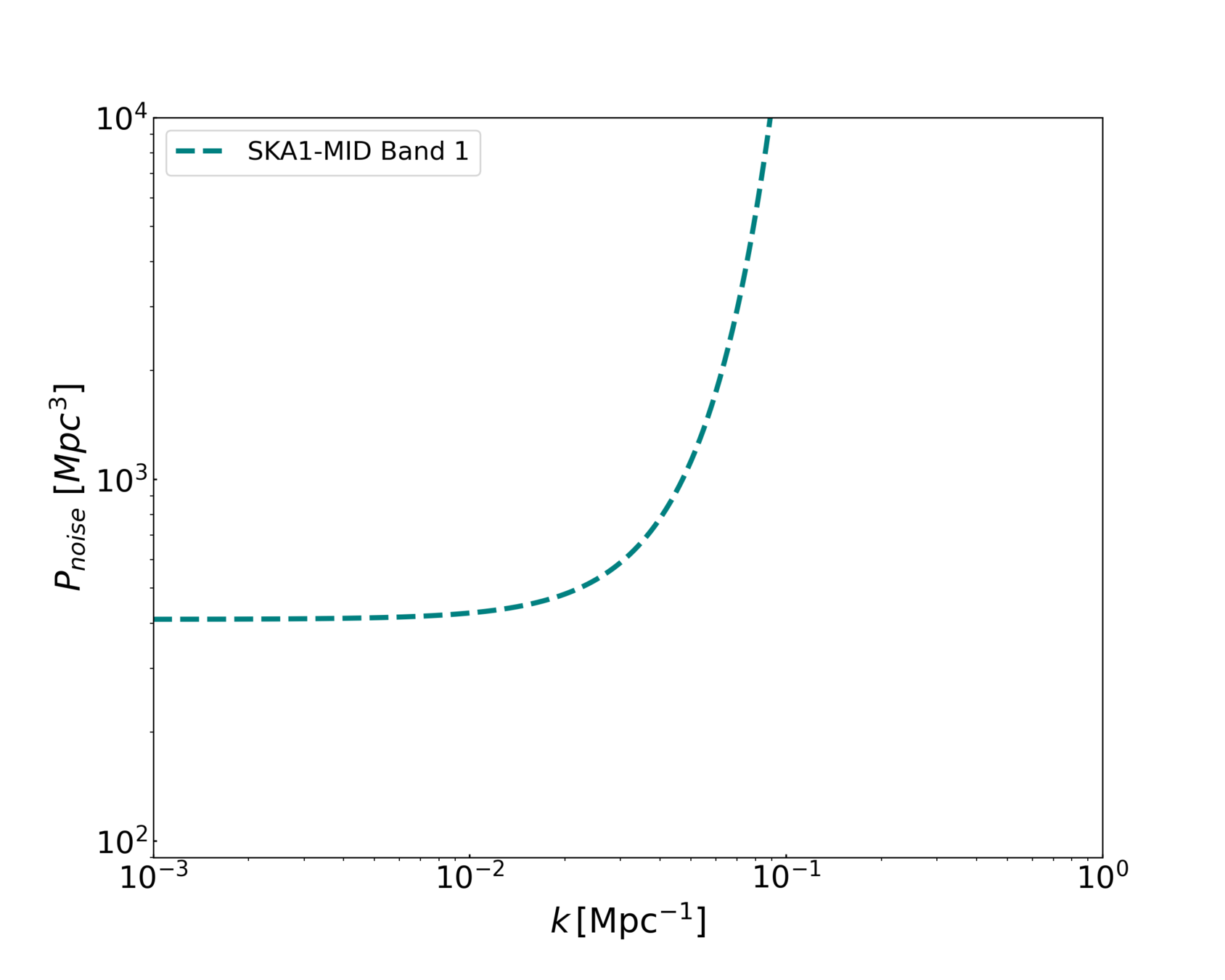
Backup slide
Backup slide
Backup slide
Backup slide
